#roosevelt legacy gen two
Photo

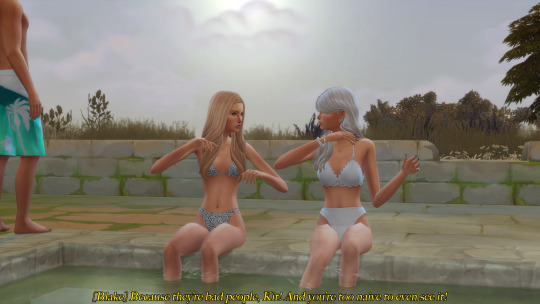


𝐑𝐎𝐀𝐃𝐌𝐀𝐏 ── 𝐂𝐇𝐀𝐏𝐓𝐄𝐑 𝐎𝐍𝐄
Kit should’ve known hoping for a lack of drama was far too much to ask. . .
#roosevelt legacy gen two#sims4#ts4#sims#thesims#simsstory#simstory#sims4story#ts4story#thesims4story#mm#maxis#ea#origin#roadmapstory
8 notes
·
View notes
Text
Remembering the Past as We Move Forward into the Future
"There is no peculiar merit in ancient things, but there is merit in integrity, and integrity entails the keeping together of the parts of any whole, and if these parts are scattered throughout time, then the maintenance of integrity entails a knowledge, a memory, of ancient things. ...To think, feel or act as though the past is done with, is equivalent to believing that a railway station through which our train has just passed, only existed for as long as our train was in it." -Edward Hyams, Chapter 7, The Gifts of Interpretation
Recording and remembering our history is important for so many reasons. It has contributed to the formation of our morals as a modern society, has helped us understand how mankind's place on the earth began and has evolved through the millennia, and most importantly, has helped us to understand change and how the society we live in came to be (American Historical Association, 1998). However, it is not easy to record these valuable parts of history and maintain these records through the ages. There has always been a constant battle between those who want to forget the past and simply move on to the future, against those who wish to preserve the history and try to learn from it as best we can. Here I make a case for the latter argument, as discussed in the Edward Hyams quote at the beginning of this post.

(Temple of Saturn, in Rome. If only these columns could tell stories! Image from Brittanica.com)
The civilizations of the past were no more impressive nor evolved than they are today. If we were to bring someone from 200 or even 100 years ago to the present day, they would be astounded seeing the amount of technological progress and positive societal evolution we have undergone. However, we owe much of what we have to the actions of the good people of the past. The people who have come before us have laid the moral and technological groundwork onto which we have built our society, both through their creative innovations as well as their firm stance against those who sought to oppress and take away rights and freedoms of others. It is so important to recognize both forms of contributions to our human evolution, in order to progress into the future with a new respect for what we have, as well as an appreciation for the largely respectful, inclusive, and just society we enjoy today.

(Survivors of the Auschwitz concentration camp, 1945. History is not always easy to take in, but “Those who do not learn from history are doomed to repeat it.” -Winston Churchill. Image from: NBC News)
Another example of our modern success being connected to the past is our ability to have access to so many natural areas for our enjoyment. There have always been people in the past who have pushed for economic development over everything else, and who desired to take everything that nature had to give to support humanity’s financial growth regardless of the environmental and ecological impacts incurred. It is thanks to the good people in history (such as Theodore Roosevelt, a pioneer in the conservation of American parks (U.S. Department of the Interior, 2020), among many others) who have fought for this resource and led to a continued maintenance of this priority of preserving natural areas to this day. Once again, our present is directly connected to the past, and once again I will stress the importance of recognizing and remembering the actions of the people who have come before us in creating the balanced, wonderful world we have today.
Thank you as always for bearing with me through my ramblings. I hope you learned a thing or two!
Ty 🦑
References:
Why Study History? (1998) | AHA. (1998). American Historical Association. https://www.historians.org/about-aha-and-membership/aha-history-and-archives/historical-archives/why-study-history-(1998)
Saller, R. P. (n.d.). ancient Rome | History, Government, Religion, Maps, & Facts. Encyclopedia Britannica. https://www.britannica.com/place/ancient-Rome
Ramgopal, K. (2020, September 16). Survey finds “shocking” lack of Holocaust knowledge among millennials and Gen Z. NBC News. https://www.nbcnews.com/news/world/survey-finds-shocking-lack-holocaust-knowledge-among-millennials-gen-z-n1240031
Christensen, D. (n.d.). “Those who fail to learn from history are doomed to repeat it.” — Whiteboard Business Partners. https://www.whiteboardbusiness.com/those-who-fail-to-learn-from-history-are-doomed-to-repeat-it-sir-winston-churchill/
The Conservation Legacy of Theodore Roosevelt. (2020, February 14). U.S. Department of the Interior. https://www.doi.gov/blog/conservation-legacy-theodore-roosevelt
1 note
·
View note
Text
The Controversial History Of Mount Rushmore
By Olaa Mohamed, Cornell University Class of 2021
July 22, 2020

With the annual Independence Day fireworks celebration taking place at Mount Rushmore, after a decade long suspension for environmental concerns, the controversial history of the monument has resurfaced in the media.[1] While the national monument is often considered to honor some of the country’s greatest presidents, its history holds another meaning to its Native American population. To many of them, Mount Rushmore is considered a representation of white domination and supremacy on sacred ground. The monument has always been greatly contested by the Native American tribes of the area, but now more than ever, with nationwide removal of Confederate and pre-Civil War monuments in the wake of the Black Lives Matter movement, they are calling for the land to be returned back to them.
The faces of Presidents George Washington, Thomas Jefferson, Theodore Roosevelt and Abraham Lincoln were carved onto the Black Hills of South Dakota from 1927 to 1941.[2] The Black Hills are considered a “deeply sacred place of spiritual and cultural significance” to nearly 60 Native tribes of the area and belong to Sioux Nation as a part of the Great Sioux Reservation, according to the Fort Laramie Treaty of 1868.[2] Despite the fact that the Black Hills were established as Native land, the discovery of gold in the area attracted many miners and led to an expedition headed by Gen. George Custer in 1874.[3] The Native tribes attempted to fight off the settlers but were unsuccessful, as they were under the threat of starvation. An “agreement”, in which the government would provide Native Americans with food, in subsistence rations, in exchange for the rights to the Black Hills, was eventually presented to the Sioux Nation in 1876.[4] Although only 10% of the adult male Sioux population signed the “agreement”, it was accepted by Congress and put into law with the 1877 Act, effectively abrogating the Fort Laramie Treaty.[4] Years later, in 1920 “the Sioux brought suit in the Court of Claims, alleging that the Government had taken the Black Hills without just compensation, in violation of the Fifth Amendment”, however the Court of Claims ruled against them in 1942.[4] It was during this time period that the construction of Mount Rushmore took place, as the Black Hills were considered to be government property. Eventually, the case was brought up to court again and argued upon in the Supreme Court in 1980. In a 8 to 1 decision, the Court held that the taking of the Black Hills in the 1877 Act was “in exercise of Congress' power of eminent domain over Indian property” and that “the Sioux were entitled to an award of interest on the principal sum of $17.1 million”, dating from 1877.[4] This sum has now reached over $1 billion, however, rather than accepting the settlement as monetary compensation, the Sioux are demanding their land back. [5]
The history of Mount Rushmore symbolizes domination in Native American history, but its construction also symbolizes white supremacy in its glorification of the four presidents. While they may represent significant milestones in US history, they also carry with them deceptive legacies. Two of the four, Washington and Jefferson were slaveholders. Roosevelt “actively sought to Christianize and uproot Native Americans” and even made the following comment in a speech in 1886: “I don’t go so far as to think that the only good Indian is the dead Indian, but I believe nine out of every 10 are, and I shouldn’t like to inquire too closely into the case of the 10th.”[1] Even Lincoln, who is credited for the Emancipation Proclamation, has a dark past in Native history, as he condemned 38 Native Americans in the largest mass execution known.[1] Given this history, the chairman of the Cheyenne River Sioux Tribe, Harold Frazier, described the monument as a “brand on our flesh” and stated that while “visitors look upon the faces of those presidents and extol the virtues that they believe make America the country it is today...Lakota see the faces of the men who lied, cheated and murdered innocent people whose only crime was living on the land they wanted to steal.”[1] Nick Tilsen, the founder, CEO and president of the NDN Collective, a nonprofit organization supporting Indigenous people, further explained that “Indigenous people and my ancestors fought and died, and gave their lives to protect the sacred land, and to blow up a mountain and put the faces of four White men who were colonizers who committed genocide against Indigenous people -- the fact that we don't, as Americans, think of that as an absolute outrage is ridiculous."[2]
Tilsen also stressed the importance of giving the land back to its people in today's political climate as “there's an appetite to have a conversation about symbols of White supremacy, structural racism, and now we have to tear down these systems if we want to tear down White supremacy and structural racism in this country.”[2] He is clearly not alone in this belief, as dozens of protestors sharing his view blocked the roads leading to Mount Rushmore, on the day of the fireworks celebration, with signs saying phrases such as "Protect SoDak's First People," "You Are On Stolen Land," and "Dismantle White Supremacy."[5] While some of these Native Americans believe that the faces of Mount Rushmore should be taken down altogether, there are also others who believe that the monument should be used to tell the story of the people. In either case, the Sioux people want their land back, so they can decide for themselves how to move forward, and in legal terms, they are entitled to some sort of compensation.
________________________________________________________________
1. Pietsch, B., & Fortin, J. (2020, July 01). How Mount Rushmore Became Mount Rushmore. Retrieved July 19, 2020, from https://www.nytimes.com/2020/07/01/us/mount-rushmore.html
2. Klein, B. (2020, July 04). Trump uses Mount Rushmore address to rail against removal of monuments. Retrieved July 19, 2020, from https://www.cnn.com/2020/07/03/politics/trump-mount-rushmore-fireworks/index.html
3. Kaczke, L., & Ellis, J. (2020, July 02). Oglala Sioux President says Mount Rushmore should be 'removed': What's behind the site's controversial history. Retrieved July 19, 2020, from https://www.argusleader.com/story/news/politics/2020/06/25/mount-rushmore-oglala-sioux-president-removal-president-trump/3198922001/
4. United States v. Sioux Nation of Indians, 448 U.S. 371 (1980), No. 79-639 (Justia, Dist. file). Retrieved July 19, 2020, from https://supreme.justia.com/cases/federal/us/448/371/
Collman, A. (2020, July 04). Native American protesters blocked the road leading up to Mount Rushmore and faced off with the National Guard in the hours before Trump's fiery speech. Retrieved July 19, 2020, from
https://www.businessinsider.com/native-americans-blocked-road-to-mount-rushmore-before-trump-speech-2020-7
0 notes
Text
The Legacy of the 5307th Merrill’s Marauders: Wisconsin MIAs in Burma
This post was written by Vaneesa Cook, historical research fellow for UW–Madison’s Missing in Action Recovery and Identification Project.
In the winter of 1944, while many Americans were tracing the progress of Allied island hopping throughout the Pacific, a special unit of U.S. soldiers set out on foot across hundreds of miles of mountains and thick jungle on a mission that commanders estimated would result in at least eighty-five percent casualties.
They were right. By the end of the summer, the nearly 3,000 infantrymen of the “Merrill’s Marauders,” the Army’s 5307th Composite Unit (Provisional), had been reduced to about 200 survivors. And yet, their story — across Burma (now known as Myanmar), behind enemy Japanese lines, and into the hard-fought, costly Battle of Myitkyina — remains largely unknown, even among many history buffs.
One of those survivors is 96-year-old Robert E. Passinisi of Lindenhurst, New York, who has spent his life preserving the history and legacy of Merrill’s Marauders. As he told the UW-Madison Missing in Action Recovery and Identification Project (UW-Madison MIA-RIP) in June, he believes the nature of the unit and its unique assignment has obscured its place of importance in the Allied victory in World War II.
“There were 15 million men in arms,” he said of the total deployment to Europe and the Pacific during the war, “[so] how important would a 3,000-man secret mission be?”
It was, indeed, extremely important for the long-term success of the war. Since the Japanese had seized Burma from the British in 1942, Allies had struggled to keep communication and supply lines open between India and China. The recapture of Burma, including its strategic airfields in the northern city of Myitkyina was considered crucial for establishing air supply in the effort to encircle and defeat Japan.
Brig. Gen. Frank Merrill, left, and Gen. Joseph Stilwell. U.S. Army photo.
When President Franklin D. Roosevelt and General George Marshall put out the call for volunteers to serve in a provisional unit of high value and high risk, they received the commitment of almost 3,000 volunteers, some who had been fighting on the islands of the South Pacific. Passinisi volunteered, though he knew nothing of the location or purpose of the mission. So did at least three soldiers who hailed from Wisconsin. They would eventually become the unit nicknamed “Merrill’s Marauders” after their original commander Brigadier General Frank Merrill.
Pvt. Richard H. Gunderson of Marshall, who worked for Oscar Mayer in Madison before enlisting, and Staff Sgt. Vilas D. Parker of Fond du Lac both signed up for the mission call and assembled for training in India.
Parker originally served with the 32nd Division in the Pacific, where he doubtless learned the difficulties of jungle combat. Despite their previous training and experience, however, the Marauders were intended to take part in operations that did not resemble typical combat engagements. As a light infantry unit, they had to move quickly, on foot and with light weapons and supplies, through rough terrain and behind enemy lines.
In early 1944, the Marauders, including Gunderson, Parker, and Passinisi, began their trek, guided by local Kachin scouts, across hundreds of miles of high mountains in northern Burma. A series of battles awaited them on the other side. In villages that most Americans had never heard of — Walawbum, Shaduzup, Inkangahtawng, Nhpum Ga — the Marauders engaged the Japanese in combat, earning success each time, and slowly reopening supply routes across the region.
Their culminating mission, to retake the all-weather airstrip on the outskirts of Myitkyina, was important for creating more direct and safer air supply routes across “the Hump” of the Himalayan mountains, a barrier range at the border of China that had cost the lives of countless U.S. pilots, including over a dozen from Wisconsin. One of those air casualties was Staff Sergeant Vilas Parker, whose C-47 crash site was discovered in the late 1980s by Kachin Burmese natives. It is unclear whether American investigators were allowed access to the area to search for the soldiers. Dozens of crash sites and the remains of their pilots are still hidden in the mountains and jungles in Asia.
Merrill’s Marauders cross a river in Burma (now called Myanmar) in 1944. U.S. Army photo.
The exhausted men of the Marauders were expecting much-needed rest and recovery after the capture of the airstrip west of the city of Myitkyina, which was heavily defended by well-trained Japanese soldiers. On May 17, the Marauders, aided by a Chinese regiment, seized the airstrip in a surprise attack that caught the Japanese off guard. But the Marauders’ mission did not end there. Instead of evacuating to India for recovery as promised, they were ordered by Gen. Joseph Stilwell, commander of the China-Burma-India theater, to advance into the city of Myitkyina, all the while defending the airstrip for Allied use.
The Marauders fought valiantly, though they suffered from low rations, little sleep and ongoing bouts of dysentery and malaria. As casualties increased throughout May, commanders realized that the Marauders were in desperate need of reinforcements. They sent out a new call for volunteers across all theaters and deployed reinforcements from engineer battalions working to repair roads and bridges in Burma. Wisconsinites John N. Brown of Rhinelander, Maurice E. Strutz, and Raymond P. Merchlevich found themselves fighting in Myitkyina by early June.
Sgt. Strutz and Pfc. Merchlevich likely knew each other, since they both served in the same battalion of the 209th Combat Engineers. Though they had little reason to fire their M-1 rifles since basic training, they were thrust suddenly into a chaotic and vital combat situation, ordered to advance into Japanese-controlled areas of Myitkyina. Caught behind enemy lines for 5 days during an operation in mid-June, Strutz and Merchlevich lost their lives within days of each other, June 13 and June 15, respectively. They were posthumously awarded the Bronze Star and Purple Heart.
Second Lt. John N. Brown had enlisted to serve in the US Army in February 1942, leaving behind a wife, a child, and a career as a traffic officer in Rhinelander. After receiving officer’s training stateside, he answered the call for volunteers to reinforce the decimated Marauders in the spring of 1944. Assigned to a headquarters company, Brown was killed in action on June 28, circumstances unknown. He is also a recipient of the Bronze Star and Purple Heart, and his name is inscribed on the Tablets of the Missing in the Philippines.
Throughout June and July, the reinforced battalions continued to advance on the city of Myitkyina, often yards at a time. On August 3, 1944, the Battle of Myitkyina ended with the collapse of organized Japanese defense. Clearance activities of remaining pockets of Japanese resistance continued until August 5, 1944. The capture of Myitkyina helped increase deliveries of supplies to China and meant that as soon as the fuel pipeline and Ledo Road reached the town, the Allies would have a major supply base squarely on the road and rail net of Burma, and within easy distance of China itself.
This achievement, however, was costly. Only about two hundred of the original 5307th Marauders soldiers survived the Burmese campaign.
Infamous 21-turn stretch of the Ledo Road used to support Army units during World War II in mountainous Burma. U.S. Army photo.
The soldiers who died during the Battle of Myitkyina were buried in temporary cemeteries outside of the city. However, after the war, Myitkyina became a centralized location for receiving the remains of Allies from throughout the region. Years of decay and hasty documentation efforts in the midst of battle made it difficult to keep accurate records. It is likely that is how Wisconsinites Strutz, Mechlevich, and Brown received their Missing in Action (MIA) status.
Though their remains may have been recovered and reburied at the National Memorial Cemetery of the Pacific (Honolulu, HI) with their fallen comrades, the investigation into their whereabouts is ongoing. Since 2013, the UW–Madison MIA Project has worked to research and recover U.S. soldiers, mostly Wisconsin enlistees who served during World War II. The men who marched with the Marauders are included in that effort, as well as the engineers and airmen who lost their lives in Burma.
The MIA Project also strives to collect the stories of those who served, like those of veteran Marauder Robert Passinisi. When asked how the Marauders were able to achieve their legendary status, he said: “by the end we knew that we did the impossible.”
For their courage, endurance, and sacrifices, the members of the Marauders received the Bronze Star, and many were also awarded Purple Hearts. Passinisi is lobbying Congress to bestow the Congressional Gold Medal upon the 5307th Marauders unit.
“If you were to search all the unit’s military history from the beginning of time,” he said, “you won’t find another unit that fought behind enemy lines for so long under such adverse conditions and proved successful. If this is not deserving of the CGM award, then nothing is.”
The Congressional Gold Medal may bring more attention to the Marauders and this “forgotten” theater of the war. But the Marauders legacy lives on in the memory of survivors like Passinisi, in their re-designated unit (the 75th Rangers), and in the hearts of family members who await answers about what happened to their lost loved ones.
The Legacy of the 5307th Merrill’s Marauders: Wisconsin MIAs in Burma syndicated from https://triviaqaweb.wordpress.com/feed/
0 notes
Photo
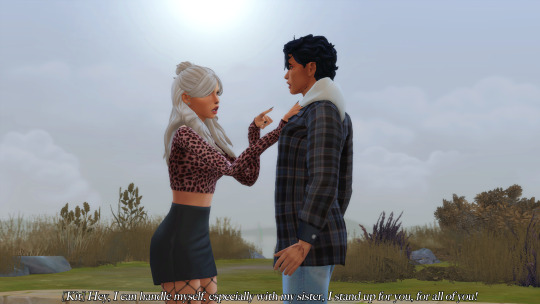

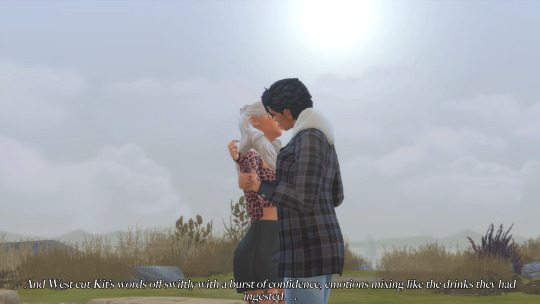


𝐑𝐎𝐀𝐃𝐌𝐀𝐏 ── 𝐂𝐇𝐀𝐏𝐓𝐄𝐑 𝐎𝐍𝐄
Lines were crossed, and now there’s no going back. . .
#roosevelt legacy gen two#thesims#sims#ts4#thesims4#thesims4story#ts4story#simsstory#simstory#roadmapstory
7 notes
·
View notes
Photo


𝐑𝐎𝐀𝐃𝐌𝐀𝐏 ── 𝐂𝐇𝐀𝐏𝐓𝐄𝐑 𝐎𝐍𝐄
A brief intermission of Kit’s dramatic life just to appreciate her bedroom <3
#roosevelt legacy gen two#sims4build#ts4build#ts4room#thesims4room#thesims4#sims4#ts4#thesims#thesimslegacy#simslegacy#ts4legacy#thesims4legacy#sims4story#simsstory#ts4story#simstory#cc#maxismatch#ea#origin
7 notes
·
View notes
Photo





𝐑𝐎𝐀𝐃𝐌𝐀𝐏 ── 𝐂𝐇𝐀𝐏𝐓𝐄𝐑 𝐎𝐍𝐄
Hearing the boy who had become one of her best friends and that had kissed her only hours prior had been arrested and spent time in juvie seemed to turn Kit’s world upside down. Blake had told her the truth, this she was thankful for, but Kit tossed and turned in her bed that night, unable to sleep with this restless idea in her mind.
#roosevelt legacy gen two#sims#thesims4#thesims4story#simsstory#simstory#ts4story#sims4story#thesimsstory#sims4legacy#ts4legacy#simslegacy#roadmapstory
4 notes
·
View notes
Photo



𝐑𝐎𝐀𝐃𝐌𝐀𝐏 ── 𝐂𝐇𝐀𝐏𝐓𝐄𝐑 𝐎𝐍𝐄
Summer was coming to a close, and during a quite competitive game of basketball Cameron mentions the back to school party that would be taking place at The Bluffs that night-- and that it would include just about any teen that could make their way out there. . . Senior year was about to get a lot more interesting.
#roosevelt legacy gen two#sims4#ts4#thesims4#sims#thesims#sims4story#ts4story#the sims 4 story#simstory#simsstory#ts4legacy#thesims4legacy#sims4legacy#simslegacy#thesimslegacy#thesims4gameplay#ts4gameplay#roadmapstory
5 notes
·
View notes
Photo




𝐑𝐎𝐀𝐃𝐌𝐀𝐏 ── 𝐂𝐇𝐀𝐏𝐓𝐄𝐑 𝐎𝐍𝐄
Hello San Myshuno!
-Via Kit Roosevelt’s Simstagram
#roosevelt legacy gen two#thesims4#sims4#ts4#thesims#sim#sims#thesims4story#simsstory#simstory#sims4story#ts4story#thesimslegacy#ts4legacy#sims4legacy#simlegacy#mm#maxis#ea#origin#Roadmapstory
5 notes
·
View notes
Photo



𝐑𝐎𝐀𝐃𝐌𝐀𝐏 ── 𝐂𝐇𝐀𝐏𝐓𝐄𝐑 𝐎𝐍𝐄
An unexpected call from West shook up Kit’s otherwise boring Sunday, and she figured she might as well go along with whatever her friends had planned.
#Roosevelt legacy gen two#simsstory#simstory#sims4story#ts4story#sims4legacy#ts4legacy#thesims4legacy#simslegacy#simsgameplay#ts4gameplay#thesims4gameplay#thesimsgameplay#mm#maxis#ea#origin#sims#sim#roadmapstory
4 notes
·
View notes
Photo




𝐑𝐎𝐀𝐃𝐌𝐀𝐏 ── 𝐂𝐇𝐀𝐏𝐓𝐄𝐑 𝐎𝐍𝐄
It didn’t take Kit long to spill the beans to Rowan, and while she took the redhead’s words to heart, somehow it was West’s quipped comment that eased her anxiety.
#sims#sim#thesims#thesims4#ts4#sims4#roosevelt legacy gen two#the roosevelt legacy two#simsstory#simstory#sims4story#ts4story#thesims4story#thesimsstory#maxis#ea#origin#thesims4legacy#sims4legacy#ts4legacy#simslegacy#roadmapstory
3 notes
·
View notes
Photo


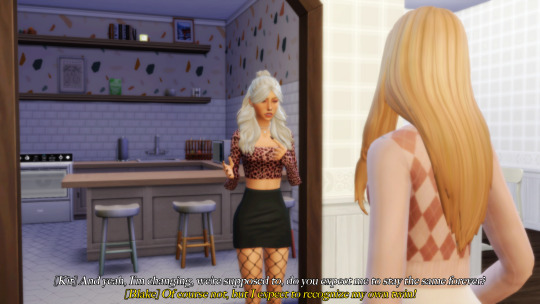


𝐑𝐎𝐀𝐃𝐌��𝐏 ── 𝐂𝐇𝐀𝐏𝐓𝐄𝐑 𝐎𝐍𝐄
Safe to say Blake was hurt by this sudden intense change in her twin’s appearance without so much as a text to signify a desire for this. Though, perhaps her words were too harsh, as they left Kit rather self-conscious about this adventurous style.
#the roosevelt legacy gen two#Roosevelt legacy gen two#thesims#sims#sim#thesims4story#simsstory#simstory#ts4story#ts4#thesims4#sims4#thesims4legacy#simslegacy#sims4legacy#ts4legacy#ts4gameplay#roadmapstory
2 notes
·
View notes
Photo


𝐑𝐎𝐀𝐃𝐌𝐀𝐏 ── 𝐂𝐇𝐀𝐏𝐓𝐄𝐑 𝐎𝐍𝐄
Kit had never been happier with her appearance, after a few boxes of hair dye, a rather intensive shopping trip, and Cameron Greco’s at home piercing talent-- but she couldn’t lie. . . she was nervous about her family’s reaction as she arrived home that night.
#sims#simcas#simscas#simmakeover#sims4#ts4#thesims4#the roosevelt legacy gen two#roosevelt legacy gen two#thesims4legacy#sims4legacy#ts4legacy#mm#maxismatch#cas#sims4cas#thesims4story#simsstory#simstory#TS4Story#roadmapstory
2 notes
·
View notes
Photo



𝐑𝐎𝐀𝐃𝐌𝐀𝐏 ── 𝐂𝐇𝐀𝐏𝐓𝐄𝐑 𝐎𝐍𝐄
Kit felt it safe to assume wherever Rowan went, Cameron and West weren’t far behind. It only took a few minutes for them to slip into a kind of comfort foreign to Kit– though, she couldn’t lie, West’s watchful eye unnerved her, especially after all Blake had said that afternoon.
#roosevelt legacy gen two#thesims4#sims4#ts4#thesims#sims#sim#thesims4legacy#sims4legacy#simslegacy#thesims4story#simsstory#simstory#ts4story#sims4story#ts4legacy#maxismatch#maxis#ea#origin#roadmapstory
3 notes
·
View notes
Photo


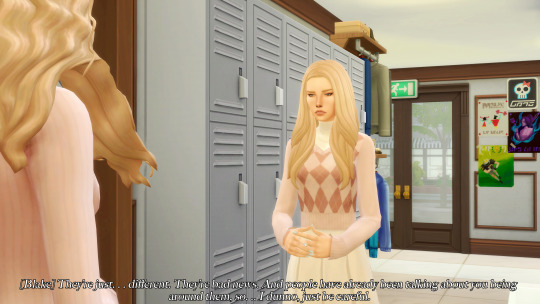

𝐑𝐎𝐀𝐃𝐌𝐀𝐏 ── 𝐂𝐇𝐀𝐏𝐓𝐄𝐑 𝐎𝐍𝐄
Kit had also already agreed to hang out with Rowan after school, but Blake didn’t need to know about that one.
#roosevelt legacy gen two#thesims#sims#sim#thesims4#sims4#ts4#thesims4legacy#thesims4story#sims4story#simstory#simsstory#ts4story#maxis#maxismatch#ea#origin#roadmapstory
3 notes
·
View notes
Photo




𝐑𝐎𝐀𝐃𝐌𝐀𝐏 ── 𝐂𝐇𝐀𝐏𝐓𝐄𝐑 𝐎𝐍𝐄
Kit had not seen many new people at Nixie’s parties. Ever since the first one in freshman year, the invites were usually passed out to the same few, the cliques of Newcrest Highschool; but this time, an unfamiliar girl jumped into conversation with Kit as if they had been friends forever.
Rowan Goode, a redhead with a shockingly similar music taste to her own, seemed to instantly attach her hip to Kit’s, quickly introducing the blonde to her best friend, Cameron Greco. And, a rather unsettling guy named West Monet.
He didn’t exchange many words with Kit, other than a courteous introduction. Though, come Monday, Kit would understand his hesitance to speak to her, or even be at the party.
#roosevelt legacy gen 2#roosevelt legacy gen two#thesims#sims#sim#thesims4#ts4#sims4#thesims4legacy#sims4legacy#simslegacy#thesimslegacy#thesimsstory#simstory#simsstory#sims4story#ts4story#maxismatch#maxis#ea#origin#roadmapstory
3 notes
·
View notes